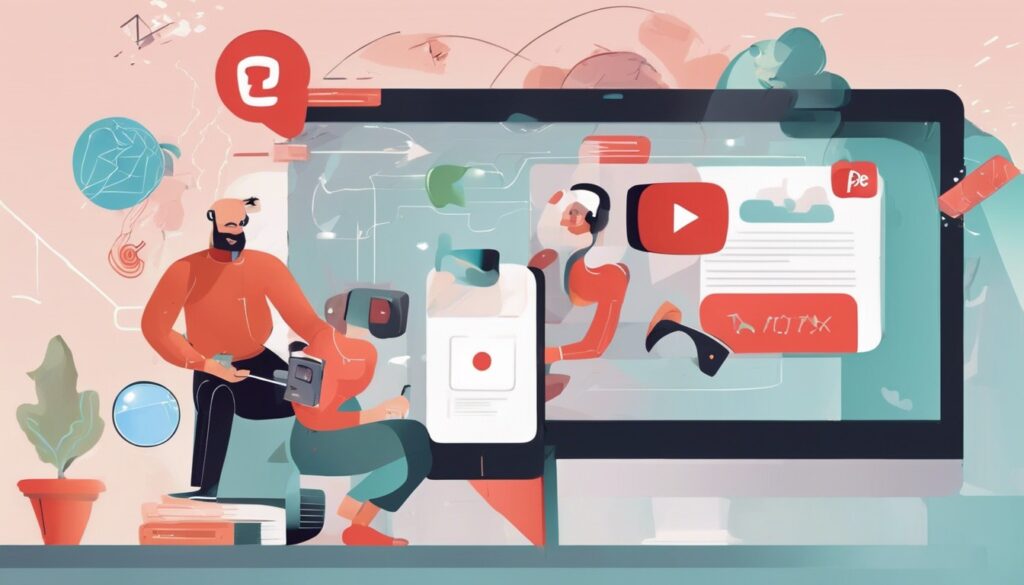With social video platforms remaining the most popular for social media engagement, it’s vital to understand YouTube trends better. Having tens of millions of viewers every day, this platform can mobilize opinion and bring people together for learning and entertainment. The dynamics of user-generated content on YouTube reflect not only the importance of this site as the venue for watched videos but also as a cultural phenomenon in the new media age.
In this article, it becomes essential to look at the future predictions of YouTube trends for the next decade’s key areas: development of content creation, multifaceted viewing with YouTube trends shorts and other forms.
Evolution of content creation
YouTube has changed how you produce, watch, and share information. This platform has made the traditional media gatekeepers open the media world for everyone to express themselves in this manner.
Increased Access to Tools
YouTube came into the world as a section of the internet through which people could upload videos that others could view on the internet. It created value by eliminating the formerly high entry barriers to video content distribution. On the creator side, YouTube enabled Publishers to address a massive audience at minimum cost. On the consumer side, YouTube provides created video topics by millions of publishers for its visitors at no charge. Before, only significant entertainment houses could deliver content via the mainstream structure (cable TV, DVDs, theaters) because of intense capital penetration. Besides, they would have to incur high costs while accessing this content to be able to view it. YouTube makes both production and consumption of the content equally available.
The Democratization of YouTube
By definition, content democratization gives ordinary people and small firms more ways to create and disseminate digital content than would have otherwise been possible. It removes prior restraints witnessed in the traditional media domain, including the issue of price and technology, which made media creation and dissemination a preserve of a few.
These new media may include blogs, e-books, podcasts, songs, videos, and digital products. Social media often back it up with YouTube, TikTok, Facebook, Instagram, Snapchat, or LinkedIn, allowing individuals to share information at a very low or no charge.
Rise of Multi-format Viewing
What you see is a trend shift in how content is uploaded to YouTube. It quickly develops into a tool allowing differential viewing, thus embracing a multi-format model excluding plain videos. This has become a trend that is revolutionizing the way people create and consume content by presenting them with an engaging experience.
Shorts, podcasts, and all that is between
Leading this revolution are what you would call YouTube Shorts, short vertical videos for mobile consumption. Such advertorials, in the form of short clips of 15—60 seconds, have gone viral because the audience loves something that can be quickly watched and shared. As mentioned, shorts are a great way for creators to showcase their ingenuity and capture the viewers’ attention to their primary content.
Rising alongside Shorts is the trend of podcasting on YouTube. With a growing interest in audio content, podcasters use the platform with a large audience to boost their voices and reach new listeners. Since people use different platforms to consume content and devote quite different amounts of time to them, reformatting audio episodes into more visually attractive types can increase the episodes’ visibility and engagement with the listeners.
User Engagement By Media Platforms
The charm of this concept is that the content will be formatted in different ways, satisfying people with varying levels of attention. Some people might look at the longer videos for deeper viewing, while others may like Shorts better due to its format, or maybe people who listen to podcasts. In this way, by choosing numerous format options, YouTube formulates people’s attitudes toward the content as personalized and more understandable.
However, the same format creates a synergy where the person who does the program can promote his work across different formats and get the best of each world. For instance, the creator can preview the next podcast episode with a suspenseful Shorts or use Shorts to share vlogs of making the episode, creating additional proximity with the viewers.
In addition to positively impacting user interaction, using multiple formats offers new opportunities for monetization for content creators. The significant aspect of YouTube is that it provides numerous ways to monetize videos, making it possible to reach out to many people through the various formats from which the creators benefit and have a sustainable, enjoyable career.
The Impact of AI and Machine Learning
AI, specifically machine learning, will change the future of YouTube trends regarding creation, details, and the general experience. Fasten your seat belt because these futuristic technologies will revolutionize the digital space gear.
AI-assisted Content Creation
The tools believe in bringing AI as an essential partner for content creators who will facilitate content production and present them with endless possibilities. From writing scripts, editing videos, and creating virtual studio backgrounds to other post-production requirements, several AI systems like ChatGPT can perform them all optimally. This not only drives content production at a faster pace but also allows the content creator to adapt quickly to emerging fads and customer expectations.
Also, AI can extend the opportunity to create unique content based on the preferences and habits of viewers to watch content. This increases audience interaction and helps better understand the relationship between channels and their audiences, even if their content is generated algorithmically.
There is also an excellent opportunity for new forms of advancement in AI-driven content creation. Ultimately, LLMs and multimodal AI can spur an almost infinite number of ideas since creators will have a vast pool of creative directions. This could mean that people might unearth completely new content typologies and ways of narrating or presenting content that differs from the current ones.
Channels dedicated to AI-generated music, automated news and information, AI-driven tutorials and educational content, AI-scripted entertainment, and virtual art and animation are just a few examples of how AI is reshaping the YouTube landscape.
Generative AI and Virtual YouTubers
The topic that preoccupies the discussion of generative AI is bringing content creation to new heights by creating realistic synthetic content, which is almost impossible to distinguish from accurate life content. As this technology develops, people who design can create impressively realistic virtual worlds, characters, and events, meaning many more types of stories and experiences.
A new addition to this area of interest is the phenomenon of Virtual YouTubers, AI-based avatars, or personalities associated with a channel. These personas can interact with audiences more or less on the same level, creating a feeling of togetherness that is not common with content creators.
However, there are always problems associated with significant amounts of power. YouTube is aware of the possible threats connected with synthetic media, mainly in elections, wars, pandemics, or other sensitive situations, and with politicians’ participation. New regulative measures will be implemented in the YouTube projects to manage these risks.
Creators will be required to disclose when they have created altered or synthetic content that is realistic, including using AI tools. Failure to do so may result in content removal, suspension from the YouTube Partner Program, or other penalties. To enhance the presentation of fake, inauthentic content, YouTube will apply EAS to identify the synthetic content and add warning labels to indicate that the content is generated from AI, especially when it is sensitive.
Additionally, YouTube will enable individuals and music partners to have the advertising AI content they did not approve or authorize taken down if the AI content is identifiable as them based on facial or voice recognition. This will safeguard the creator and artist’s private civil liberties and their intellectual property.
When these changes are implemented, anything created by YouTube’s generative AI products and features will be marked as altered or synthetic, thus giving the community members the level of transparency they need to trust the process.
Personalized and Inclusive Content
These factors are crucial for the future development of tends because, as YouTube is gradually growing, the matters of personalization and inclusion were the focus of the platform. This means that brands seek to provide targeted content experiences that appeal to people internationally.
Multi-language Support
YouTube knows that most of its listeners are international, so the company constantly tries to overcome language barriers. The multi-language audio track feature gives the creators the control to expand their viewer base by adding audio tracks in multiple languages.
To leverage this feature, you can follow these simple steps:
- Sign in to YouTube Studio on your computer.
- From the left menu, select Subtitles.
- Click the video you’d like to edit.
- Click ADD LANGUAGE and select your desired language.
- Under “Audio,” click ADD.
- Click SELECT FILE and choose the appropriate audio file in the supported format.
- Click PUBLISH to upload your audio track.
This feature does not automatically generate dubbed audio tracks; creators must record and upload their own dubbed versions. However, it offers a seamless way to cater to audiences who prefer to consume content in their native languages.
Personalization Algorithms
Recommendation algorithms are central in providing an individualized approach to content using YouTube. Such algorithms consider factors such as watch time, user interaction, video quality, and the choice of individual users to suggest videos to users.
Part of the goal is to help you get the exact videos that only ‘you’ will like the most. This is why, while two YouTube users search for the same term, they will get different search results depending on their viewing history and preference.
YouTube’s search algorithm prioritizes the following elements:
- Relevance: Matching factors like title, tags, content, and description to your search query.
- Engagement: Signals such as watch time, watch percentage, likes, comments, and shares.
- Quality: Evaluating channel authority and trustworthiness on a given topic.
- User search and watch history: Considering your past viewing preferences and interests.
Through further tweaking of these personalization algorithms, YouTube looks to integrate better and enhance the viewer’s sense of belonging and satisfaction while at the same time ensuring they have every opportunity to stumble across something they would like intuitively and seamlessly.
Conclusion
The tour through the changing landscape of YouTube will provide hope for a new world where not just entertainment is given in the form of video; a new horizon where people get informed, connected, motivated, motivated, and enlightened by video content like never before.






